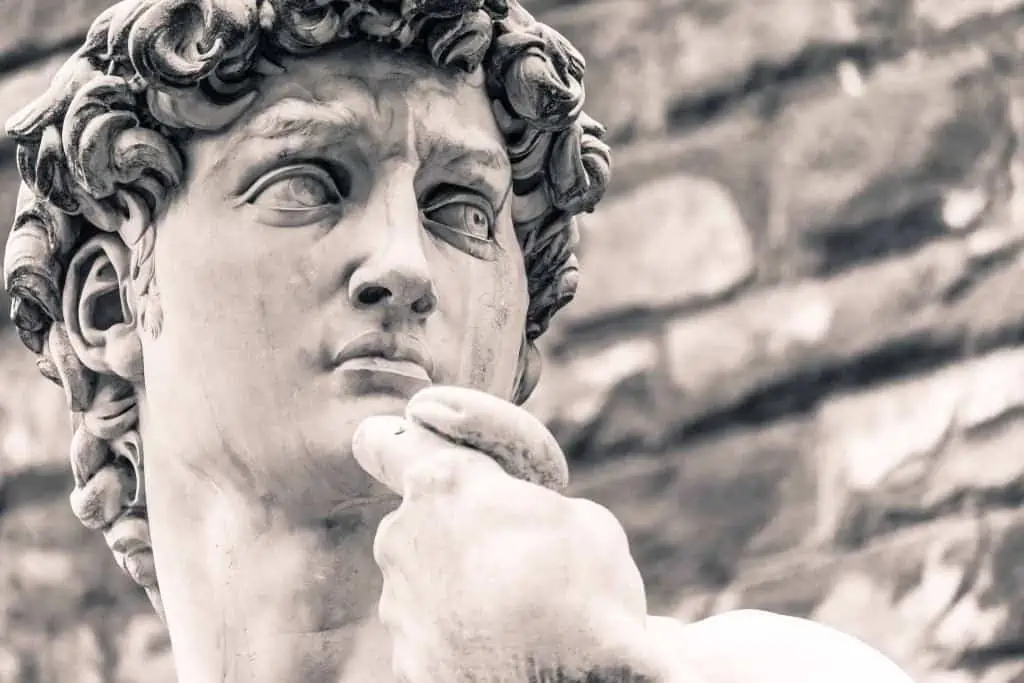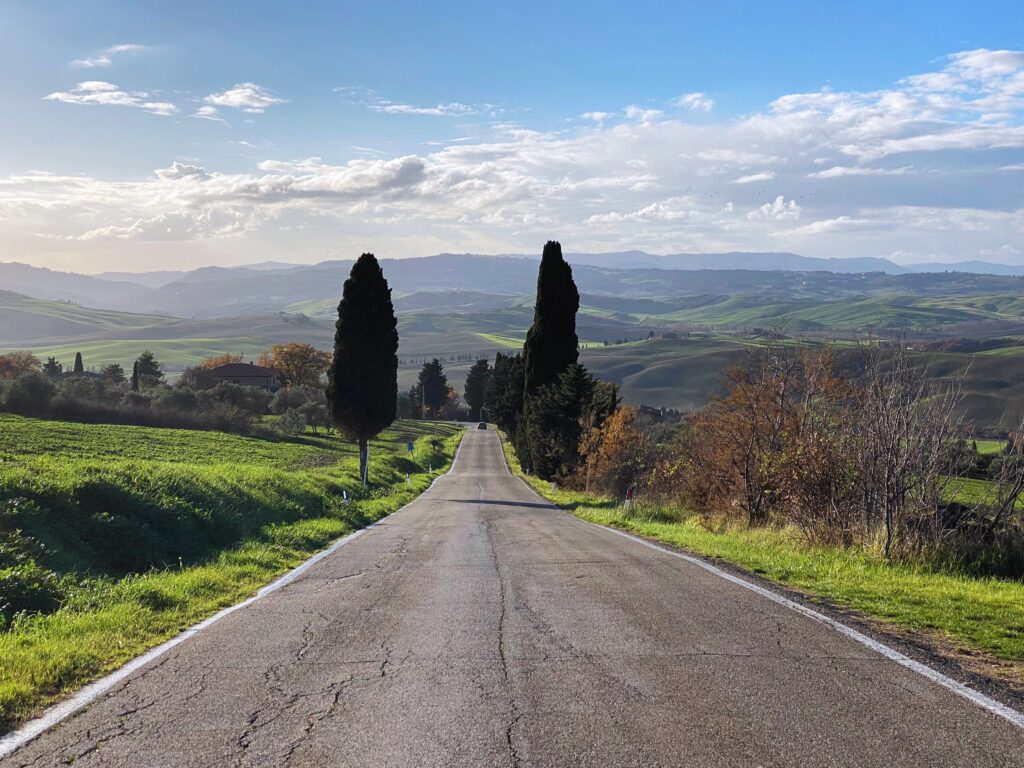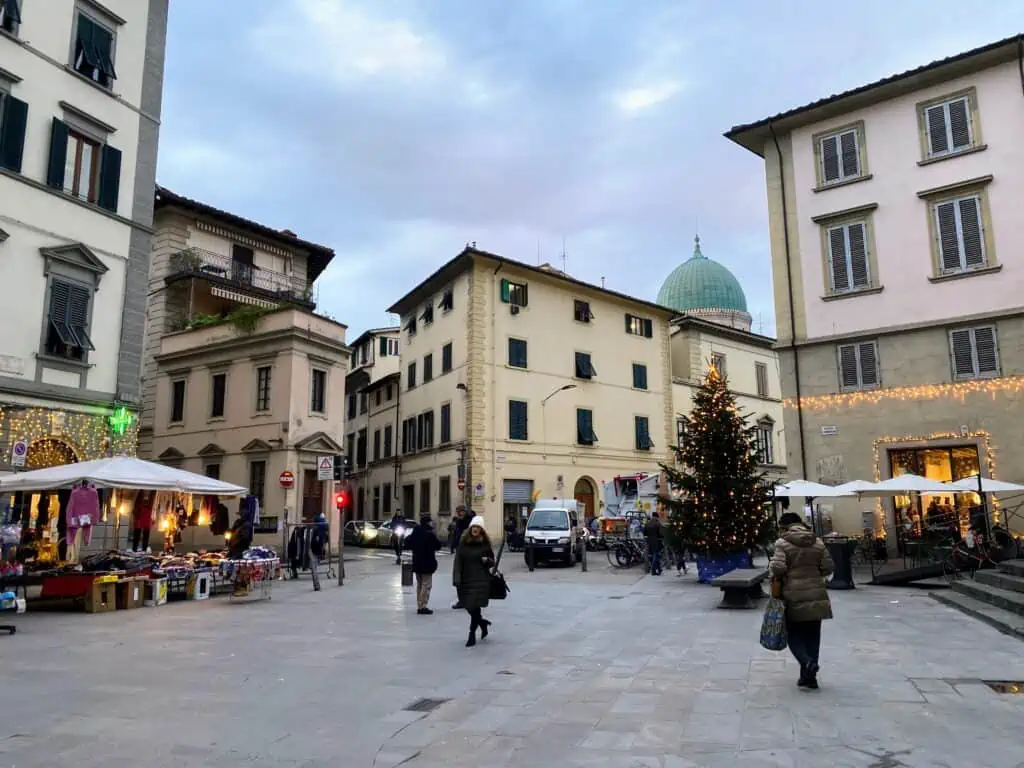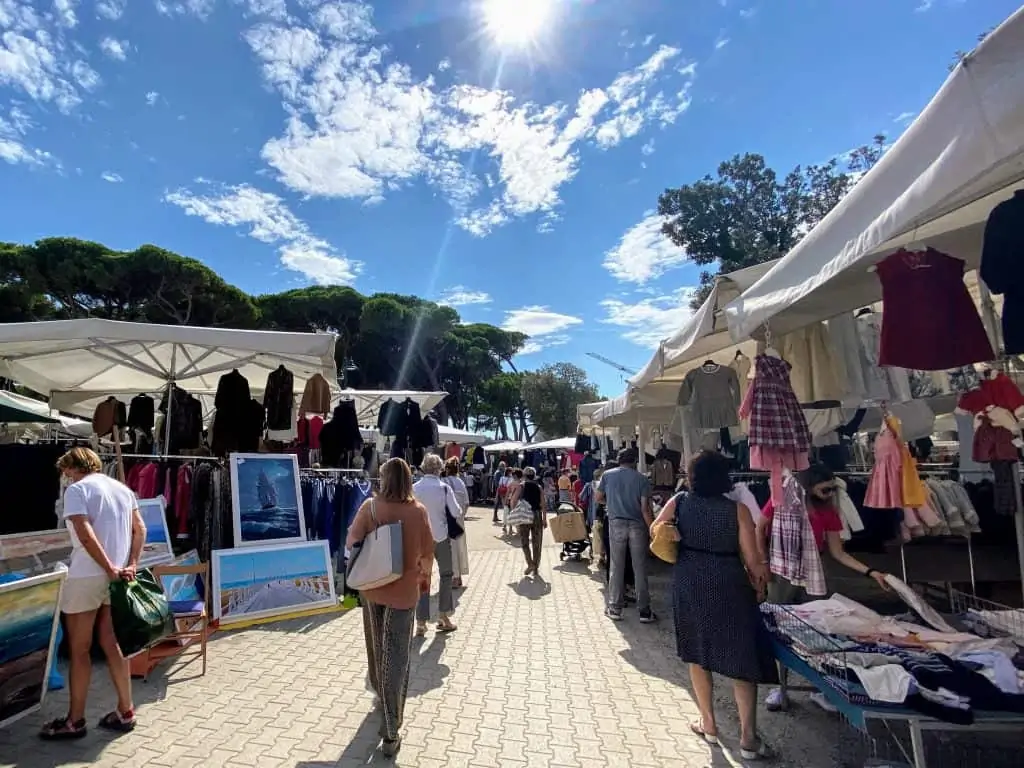Where to see the Art of Michelangelo in Florence.
This was written in collaboration with Sashia Scalvini – see her bio at the end of the post.
Michelangelo was an Italian Renaissance Man with a multitude of skills – he was an architect, a sculptor, a painter, and a poet.
Born in Tuscany, Michelangelo spent his entire life working between Florence and Rome. He died in Rome (at age 89, still working on a sculpture!), but his real home and final resting place are in Florence.
His first works were commissioned by the Medici family of Florence, and he also worked for several popes, the Florentine government, and wealthy Florentine merchants such as Agnolo Doni and the Strozzi and Taddei families.
We can follow his life in Florence and Tuscany:
- his birth near Arezzo
- his incredible creations in Florence
- his burial place in Florence
Let’s take a look at the life and art of Michelangelo in Florence and Tuscany.
Check out Our 14 Favorite Books About Michelangelo for Adults and Kids!
Table of Contents
Map of Michelangelo’s Life and Art in Florence and Tuscany
Michelangelo’s Birthplace
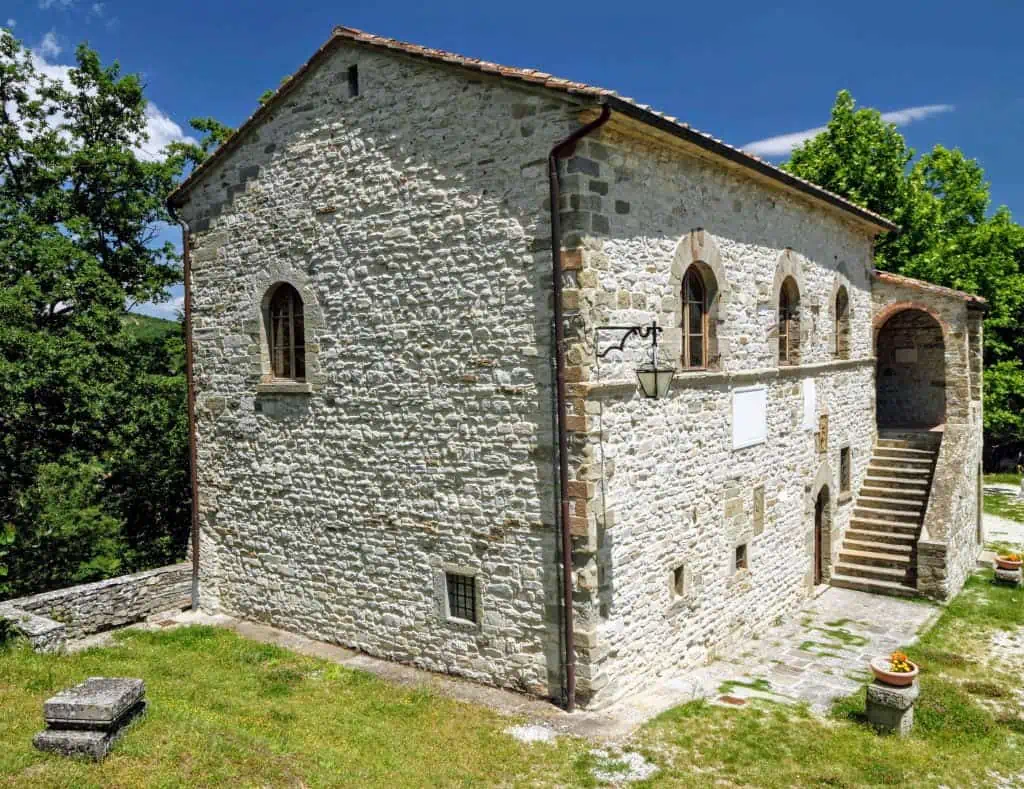
Michelangelo (Michelangelo di Lodovico Buonarroti Simoni) was born on March 6th, 1475, in the small village of Caprese, near Arezzo in Tuscany. The village is now called Caprese Michelangelo.
You can visit the intimate Birth Home of Michelangelo Museum (Museo Casa Natale Michelangelo Buonarroti), where you can soak up the spirit of where he was born.
The museum is in the small fortress and along with the plaster casts of some of his famous works (originals are in museums in Florence), you’ll find gorgeous views, exhibitions by artists, and a garden.
Michelangelo’s Quarry in Carrara
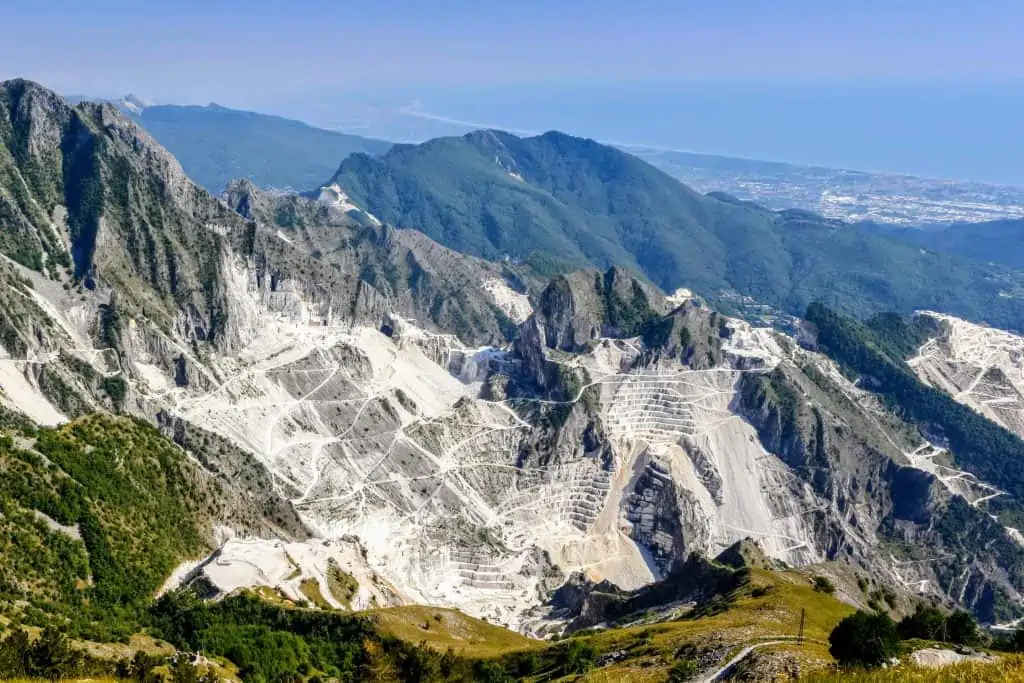
Today, Carrara marble is prized and sourced for projects and homes around the world – from Delaware to Dubai.
Michelangelo preferred traveling out to Carrara to inspect and choose (and sometimes help remove!) the massive pieces of marble for his sculptures. He sometimes spent months in the area.
You can drive in the area and get great views of the quarries. Or get an incredible up-close view and learn about the historical and modern extraction processes on a guided 4×4 tour.
Michelangelo’s Tomb in Florence
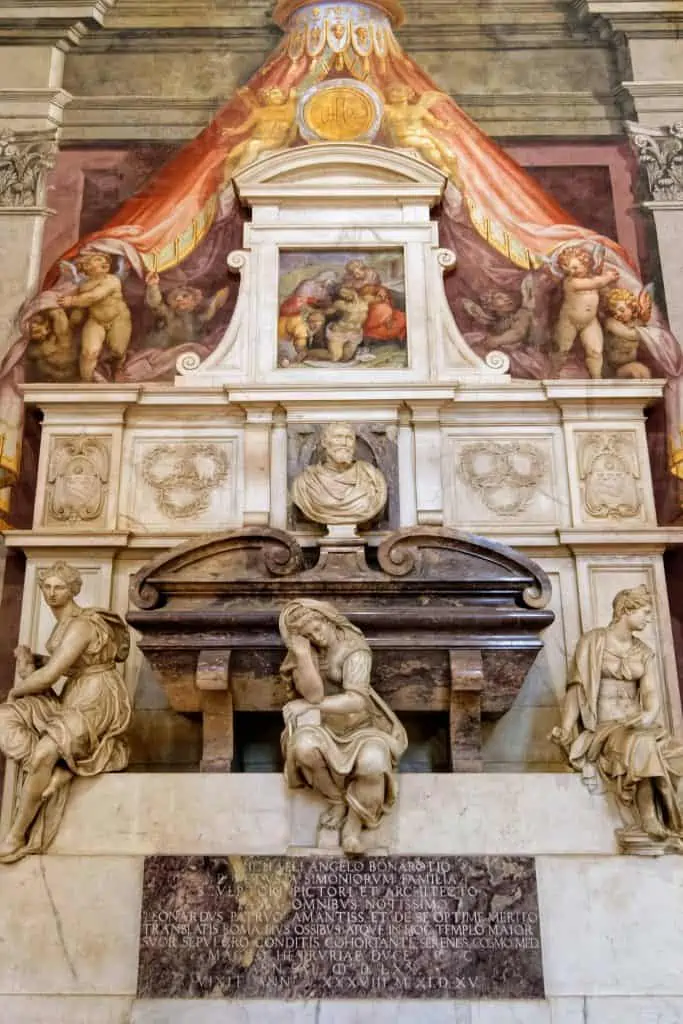
Michelangelo’s final resting place is in the Basilica di Santa Croce in the center of Florence.
You can visit his elaborate tomb, created by Giorgio Vasari, inside the Basilica. Look to the right as soon as you walk inside.
You’ll see three sculptures above his tomb, representing painting, sculpture, and architecture – each mourning the loss of the great master.
Good To Know: Don’t leave after seeing Michelangelo’s tomb. Inside the church, you’ll also find the tombs of Galileo, Machiavelli, and Rossini.
The 11 Places to See Art of Michelangelo in Florence
Casa Buonarroti
This museum is in the house that Michelangelo had planned to live in.
He purchased several smaller houses in Via Ghibellina with the intention of transforming them into one big palazzo-style home, as he wanted a ‘Casa Onorevole’ (a respectable house) for himself and the Buonarroti family.
He lived in two of these houses for years while he was working on the San Lorenzo Church for the Medici family.
Don’t Miss: The Casa Buonarroti Museum holds his earliest two works – two marble reliefs he made for Lorenzo the Magnificent when he was only 15 and 16 years old.
It also holds the biggest and most important collection of drawings (more than 200) by Michelangelo in the world.
One of the most famous drawings is ‘Cleopatra’ (1535), one of his presentation drawings (not made on commission, but as a gift). Cleopatra shows the serpentine figure style intended to make the figure seem more dynamic. According to John Shearman, this style was invented by Michelangelo.
Visit the Casa Buonarroti official website for hours and ticket info.
Good To Know: Michelangelo (as a young adult) also lived in the Palazzo Medici Riccardi in Florence.
Helpful Tip: The Casa Buonarroti is close to the Santa Croce Church and can easily be combined with a visit to this church, where you can see Michelangelo’s tomb.
Bargello Museum
The Bargello, Italy’s first national Museum, opened in 1865.
It contains five statues by Michelangelo, including the ‘Bacchus,’ his first tutto tondo. A cardinal commissioned the 21-year-old Michelangelo to sculpt it and then refused the result. Michelangelo was able to sell it to a banker, and it eventually ended up in the Medici family’s collection.
Good To Know: A tutto tondo is a piece of art that can be seen from all sides – a 3D experience. A sculpture is often a tutto tondo, whereas a painting is a 2D experience.
Other Michelangelo statues in the Bargello:
- Bust of Brutus
- Pitti Tondo
- David-Apollo
- A wooden crucifix (attributed)
Good To Know: Along with Michelangelo’s art, the Bargello is also known for:
- its three David sculptures, all created before Michelangelo’s David
- famous works by Donatello, Benvenuto Cellini, Giambologna
- the world’s most important collection of masterpieces by the Della Robbia family who specialized in glazed terracotta
- its armor room with pieces that belonged to the Medici family
Visit the Bargello National Museum official website for hours and ticket info.
Uffizi Gallery
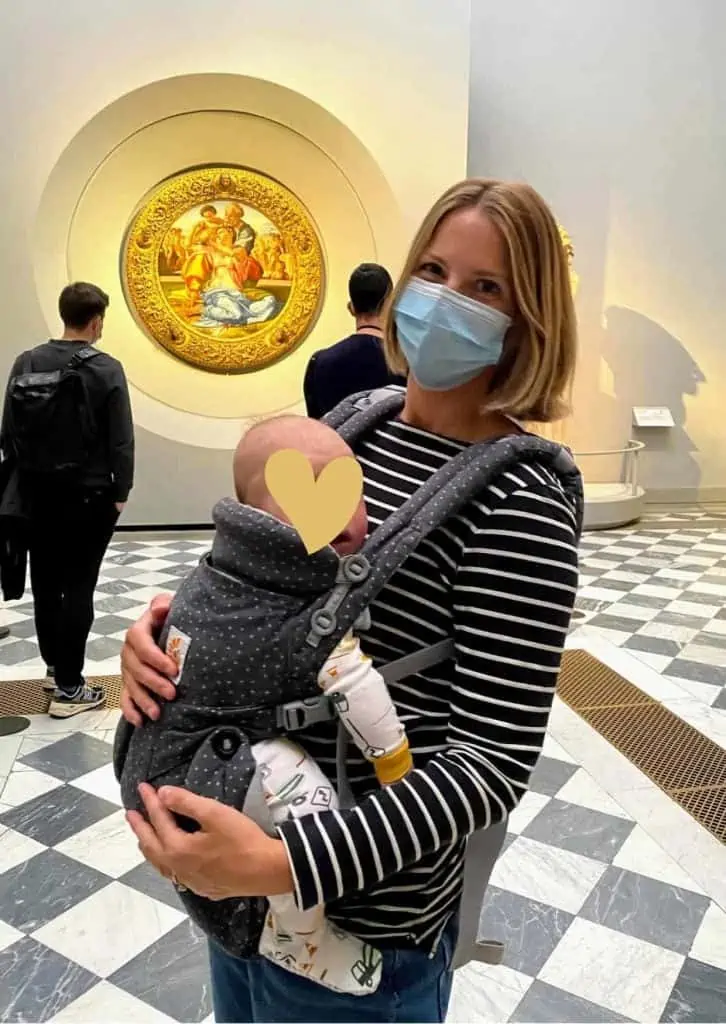
Head to the Uffizi Gallery to see one of the few paintings Michelangelo made on wood (not wall-paintings like in the Sistine Chapels). His Doni Tondo, or Holy Family, is his only painting that is 100% attributed to him.
Wandering through the Uffizi you’ll see the innovations Michelangelo made in his painting, and how he became a point of reference for later painters.
Visit the Uffizi Gallery official website for hours and ticket info.
Accademia Gallery
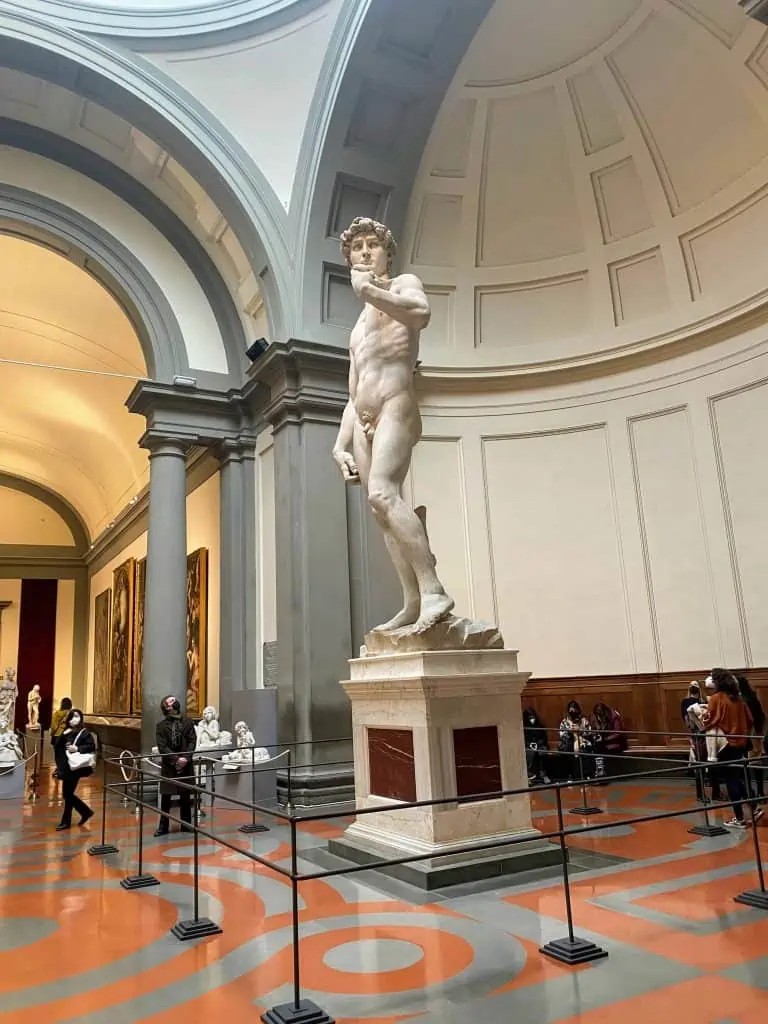
The Accademia holds 6 statues by Michelangelo, including his famous David, based on the Biblical story of the underdog David’s battle against the enemy Goliath. The others are his:
- Young Slave
- Bearded Slave
- Awakening Slave
- Atlas (or Bound Slave)
- St. Matthew
You can also see the Pietà di Palestrina sculpture, which was once attributed to Michelangelo. Can you see why scholars changed their minds?
Good To Know: Four of the statues were displayed in a grotto in the Boboli Gardens until 1909 when they were moved to the Accademia.
The Accademia Gallery is one of the best places to introduce children to Michelangelo and it’s one of our favorite places to visit in Florence with kids.
Check out our post How to Skip the Line to See the Statue of David!
The Medici Chapels (Cappelle Medicee)
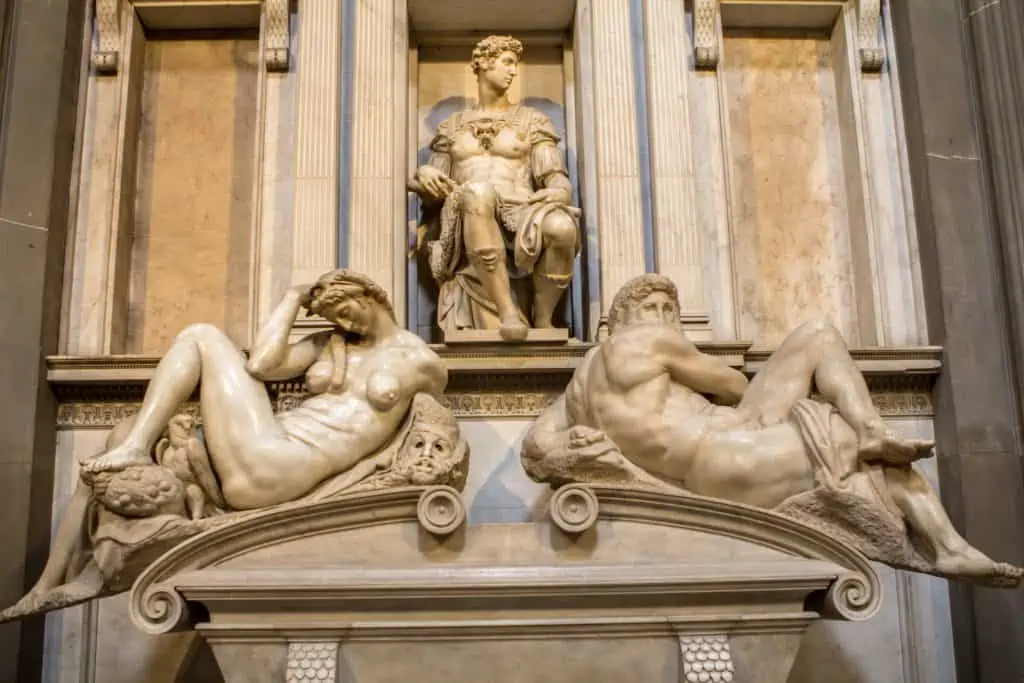
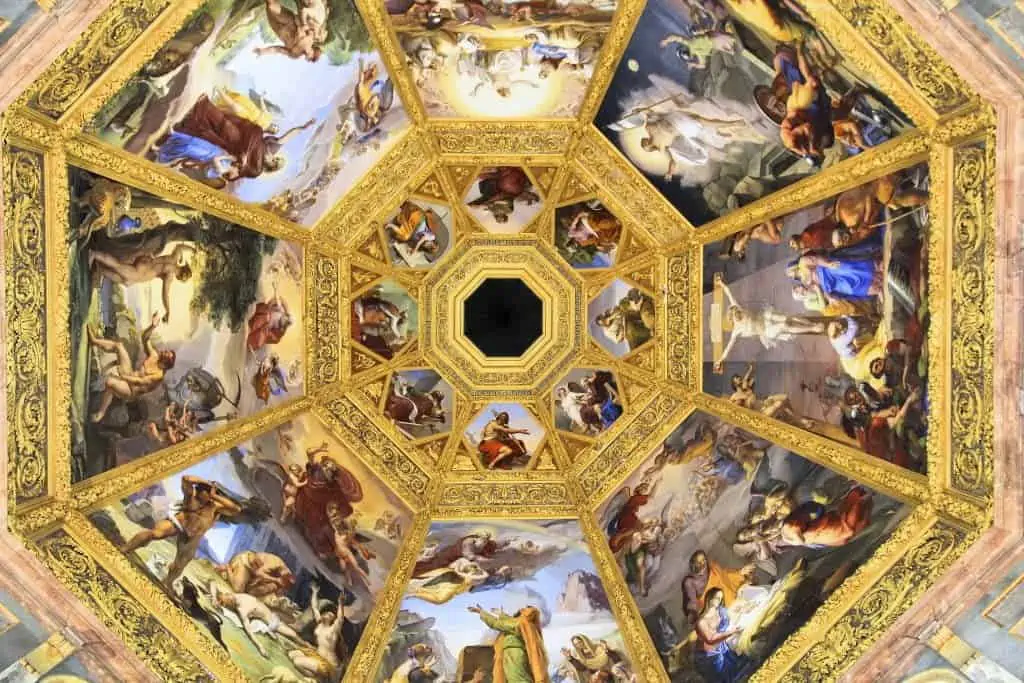
Sometimes overlooked on a visit to Florence, the Medici Chapels are worth a visit, especially to see Michelangelo’s New Sacristy.
Michelangelo worked on the New Sacristy for many years and was responsible for the architecture and statues, including:
- Lorenzo
- Giuliano
- Dawn & Dusk
- Night & Day
- Madonna and Child
Coming (Hopefully) Soon: The ‘Secret Room of Michelangelo’ was supposed to open in 2022… we’re still waiting patiently. This room was discovered in 1975 and has never been seen by the public. It will exhibit rarely seen wall drawings by Michelangelo.
Visit the Medici Chapels official website for hours and ticket info.
San Lorenzo Church (Basilica di San Lorenzo)
This church, one of the oldest in Florence, was the Florence church of the Medici family.
Michelangelo designed the Mannerist Laurentian Library (Biblioteca Laurenziana), and it is considered one of his greatest architectural achievements. But, he didn’t actually complete the library. He left Florence when it was partly constructed, and it was later finished by others using his instructions.
Good To Know: The San Lorenzo complex contains the Medici Chapels, which house more of Michelangelo’s works (see above).
Visit the Basilica di San Lorenzo official website (in Italian) for hours and ticket info.
Santo Spirito Church (Basilica di Santo Spirito)
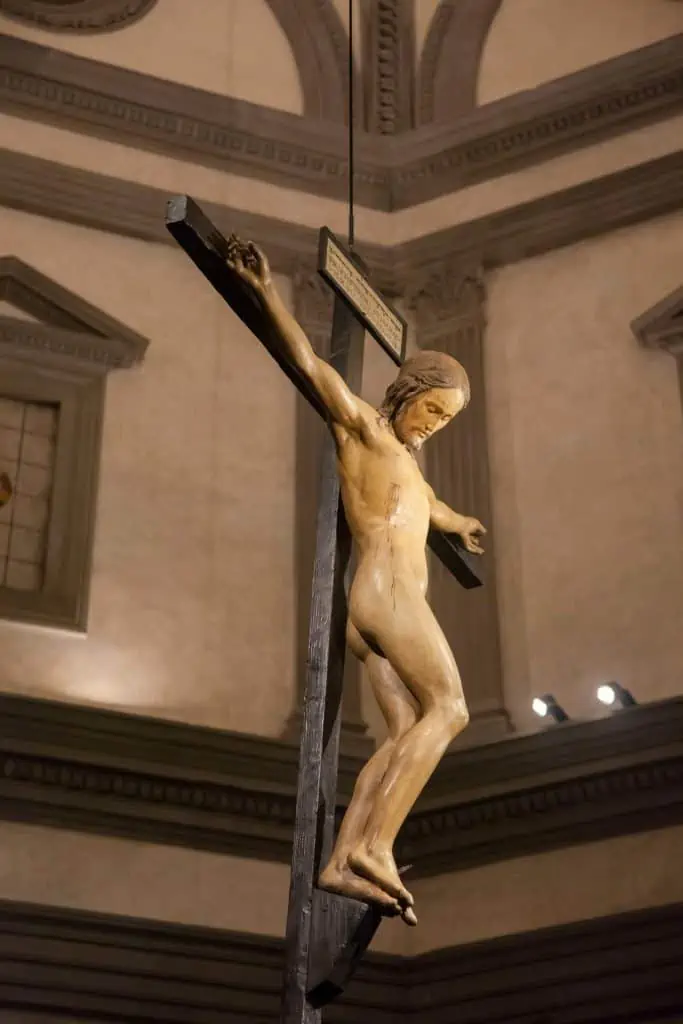
This was the church where Michelangelo studied anatomy when he was young.
He made and donated a crucifix to the church, which is still there (even after it was thought to be lost for many years). The crucifix is unique in that Christ is naked – Michelangelo shows his knowledge of the human form that he gained studying corpses from the Santo Spirito convent’s hospital.
Visit the Basilica di Santo Spirito official website (in Italian) for hours and ticket info.
Duomo Museum (Museo dell’Opera del Duomo)
The Duomo museum is home to one of the last sculptures by Michelangelo, his Florentine Pietà. It’s an unfinished sculpture – apparently, Michelangelo became frustrated with the quality of the marble.
Visit the Duomo Museum official website for hours and ticket info.
Palazzo Vecchio
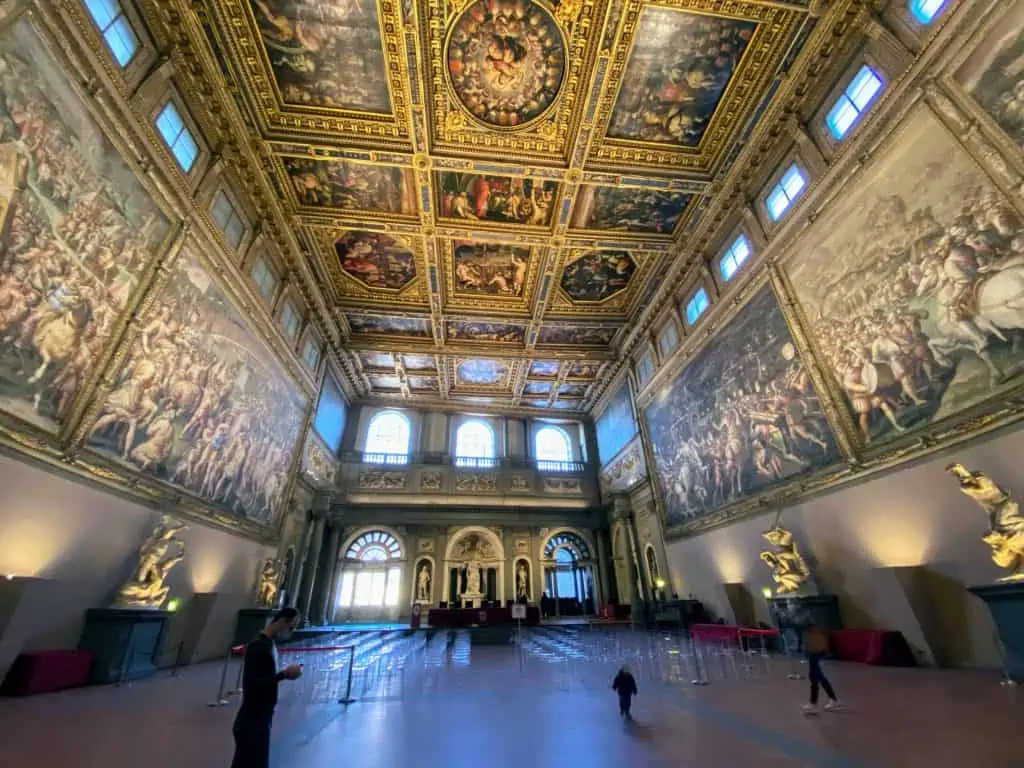
Inside Florence’s government building, head to the massive Hall of the 500 (Salone dei Cinquecento) to see Michelangelo’s sculpture of The Genius of Victory. Planned for Pope Julius II’s tomb, it was given to the Medici when Michelangelo left Florence for the final time.
While in the Hall of 500, look up at the wall paintings and imagine that one of them could have been by Michelangelo. He (along with Leonardo da Vinci) was commissioned to paint a battle on one of the walls. His plans for the Battle of Cascina never came to fruition as he was called to Rome to work on a project for the Pope.
In front of the Palazzo Vecchio, facing Piazza della Signoria, you’ll find a replica of Michelangelo’s David statue. It stands to the left of the entrance.
Finally, when you’re outside the building, look up on the left side (the side facing the Uffizi) and find what may or may not be ‘graffiti’ by Michelangelo.
Visit the Palazzo Vecchio official website (in Italian) for hours and ticket info.
Piazzale Michelangelo
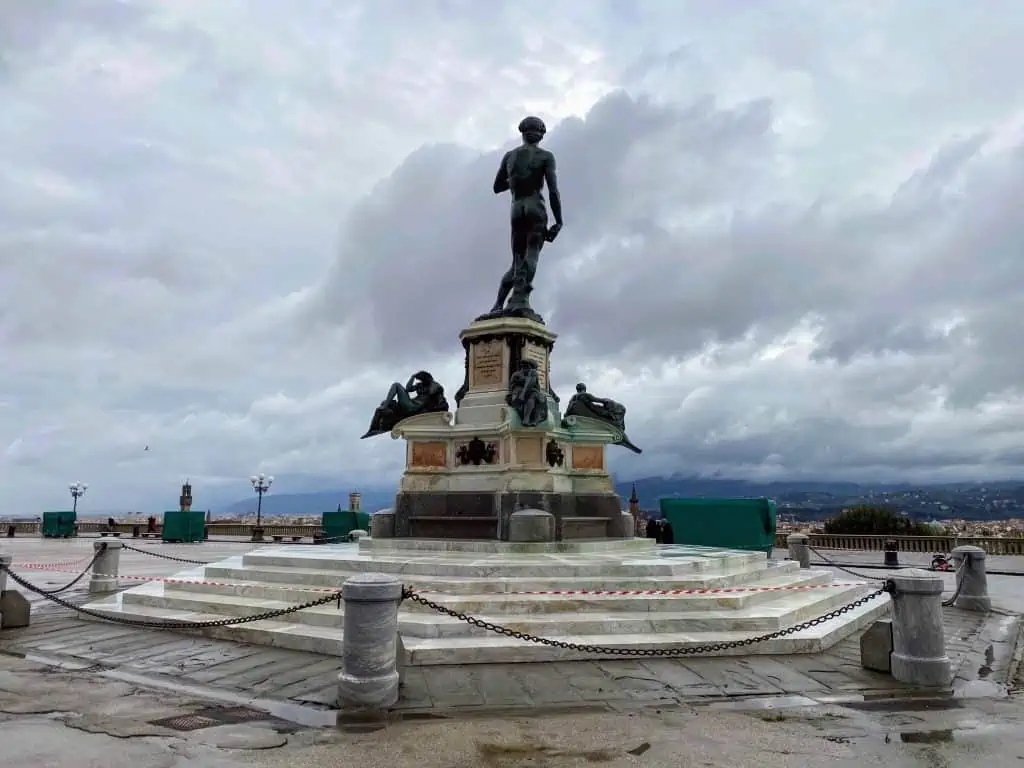
Florence’s most famous viewpoint also hosts a life-size replica of Michelangelo’s David. He towers above the city, watching over his beloved Florence.
You can walk or bus up to Piazzale Michelangelo to see David. While you definitely won’t be alone (it’s a popular spot to watch the sunset or see Florence from above), it’s a spectacular setting for one of Michelangelo’s most inspiring works of art.
Read our Complete Guide to Piazzale Michelangelo
La Grotta del Buontalenti (Boboli Gardens)
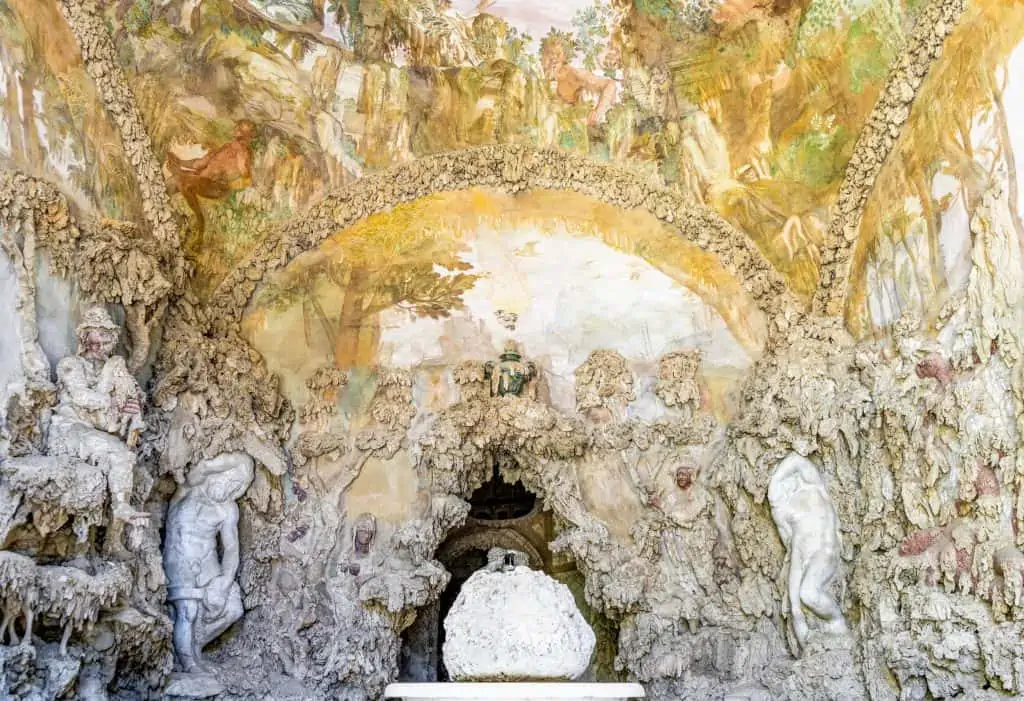
Wander through the Boboli Gardens and make your way to the Grotto del Buontalenti. This interesting grotto houses replicas of four of Michelangelo’s Prisoners statues. The originals call the Accademia home.
Visit the Boboli Gardens official website for hours and ticket info.
Read more about the Best Gardens in Florence.
Hungry after exploring the Boboli Gardens? Check out where to find the Best Gelato in Florence!
Michelangelo’s Art in Tuscany
Want to see more of Michelangelo’s art in Tuscany? You’ll need to leave Florence:
Siena (Duomo)
Inside the Duomo (cathedral) of Siena, see Michelangelo’s four small statues for the Piccolomini altar. His statue of St. Paul bears a striking resemblance to the great artist.
Visit the Siena Duomo official website for hours and ticket info.
Would you like a closer look at the art of Michelangelo in Florence? Contact Sashia for a personalized tour, including:
- Michelangelo’s Florence
- The Accademia
- The Uffizi
Checklist for Art of Michelangelo in Florence
Click here or on the checklist below to open a new page with a printable PDF document.
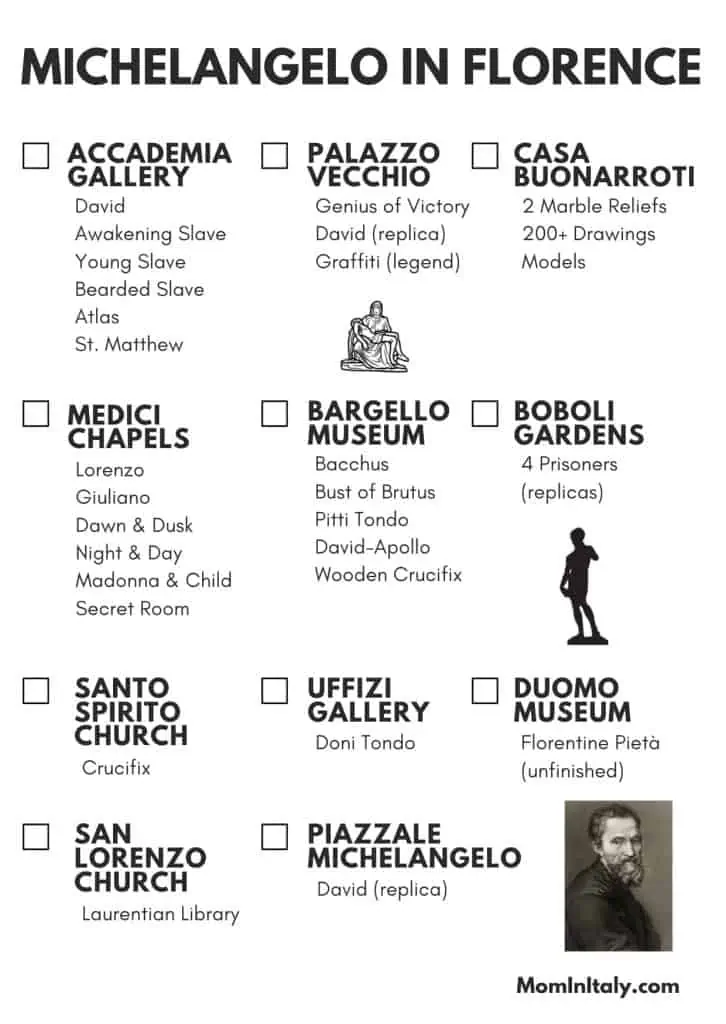
Summary of the Art of Michelangelo in Florence
Accademia
- David
- Awakening Slave
- Young Slave
- Bearded Slave
- Atlas
- St. Matthew
Bargello Museum
- Bacchus
- Bust of Brutus
- Pitti Tondo
- David-Apollo
- Wooden crucifix
Boboli Gardens
- 4 Prisoners (replicas)
Casa Buonarroti
- 2 marble reliefs
- Over 200 drawings, including ‘Cleopatra’
- Clay and wooden models
Duomo Museum
- Florentine Pietà (unfinished)
Medici Chapel
- Lorenzo
- Giuliano
- Dawn & Dusk
- Night & Day
- Madonna and Child
- Secret room of Michelangelo
Palazzo Vecchio
- Genius of Victory
- David (replica)
- Graffiti (legend)
Piazzale Michelangelo
- David (replica)
San Lorenzo Church
- Laurentian library
Santo Spirito Church
- Crucifix
Uffizi Gallery
- Doni Tondo
Michelangelo in Florence FAQ
What is Michelangelo’s most famous art?
Michelangelo Buonarroti is probably most known for his breathtaking ceiling of the Sistine Chapel in the Vatican. After the Sistine Chapel, he is most well-known for his David sculpture in Florence and his Pietà sculpture in St. Peter’s Basilica in Rome.
Does Michelangelo have any works inside the Florence cathedral?
No, there aren’t any sculptures or paintings of his inside the cathedral. But, his famous David sculpture was originally supposed to be displayed on the outside of the Santa Maria del Fiore cathedral.
Author Bio – Sashia Scalvini
Sashia, born in Denmark, first came to Florence in 1993 to study the Italian language and Renaissance art. The original plan was to stay a few months, but it turned out to be a life project – she also found her husband Carlo (who cooks the most delicious Tuscan dishes). Sashia has an MA in Italian language, literature, and art. She has worked as a teacher and has been an official tour guide in Florence since 2008. Her fields of research are within the Italian Renaissance and she has a special love for Michelangelo. When not working or studying or visiting churches and museums, she loves opera, cinema, food and wine. You can email her at onsiteflorence [@] yahoo.com and she’ll set up the best tour for you and your family!
